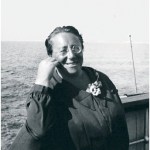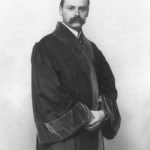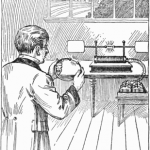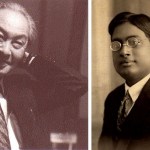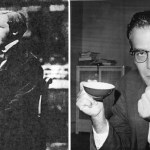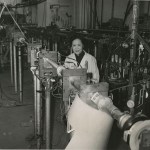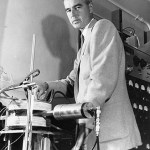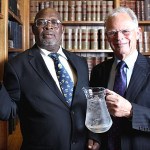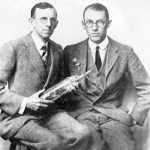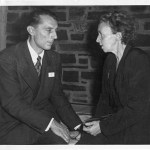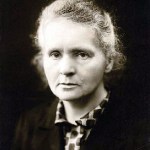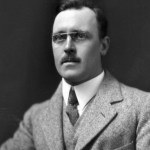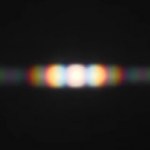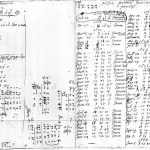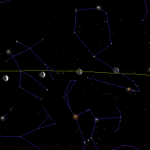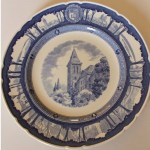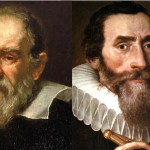Advent-Stories
(When I launched the Advent Calendar of Science Stories series back in December, I had a few things in mind, but wasn’t sure I’d get through 24 days. In the end, I had more than enough material, and in fact didn’t end up using a few of my original ideas. So I’ll do a few additional posts, on an occasional basis, to use up a bit more of the leftover bits from Eureka: Discovering Your Inner Scientist…)
While Eureka is built around stories, it's really a book about the process of science, using those stories to highlight particular aspects of the scientific process. The hope is that making the…
(When I launched the Advent Calendar of Science Stories series back in December, I had a few things in mind, but wasn’t sure I’d get through 24 days. In the end, I had more than enough material, and in fact didn’t end up using a few of my original ideas. So I’ll do a few additional posts, on an occasional basis, to use up a bit more of the leftover bits from Eureka: Discovering Your Inner Scientist…)
While we mostly think of science being done in comfortable institutes if not gleaming laboratories, one of the most impressive and inspiring things about science is that people can and do carry…
(When I launched the Advent Calendar of Science Stories series back in December, I had a few things in mind, but wasn't sure I'd get through 24 days. In the end, I had more than enough material, and in fact didn't end up using a few of my original ideas. So I'll do a few additional posts, on an occasional basis, to use up a bit more of the leftover bits from Eureka: Discovering Your Inner Scientist...)
One of the things I was reacting against in writing Eureka is the popular idea of scientists as a sort of unworldly elite, off doing their ivory-tower idealized thing without worrying about…
(When I launched the Advent Calendar of Science Stories series back in December, I had a few things in mind, but wasn't sure I'd get through 24 days. In the end, I had more than enough material, and in fact didn't end up using a few of my original ideas. So I'll do a few additional posts, on an occasional basis, to use up a bit more of the leftover bits from Eureka: Discovering Your Inner Scientist...)
Every physicist with the tiniest bit of a public profile gets letters from people with a pet theory to promote. These days, email and social media make it incredibly easy to flood the inbox of…
(When I launched the Advent Calendar of Science Stories series back in December, I had a few things in mind, but wasn't sure I'd get through 24 days. In the end, I had more than enough material, and in fact didn't end up using a few of my original ideas. So I'll do a few additional posts, on an occasional basis, to use up a bit more of the leftover bits from Eureka: Discovering Your Inner Scientist...)
One of my very favorite stories about a famous physicist concerns a young man of about 19, arriving at Cambridge from the University of Edinburgh. While being introduced around the college, it…
When I launched this back at the start of December, I honestly wasn't sure I would have enough good stories to make it through. I suspected I might end up going a week or two, then quietly letting the whole thing drop. As we come to the end, though, I've run out of days well before running out of stories. There's this one slot left, and a huge number of great stories I could relate-- Pauli proposing the neutrino as an act of desperation, or Cowan and Reines detecting it. The race to split the atom in the 1930's, won by Rutherford's Cavendish Lab. Julian Schwinger's odd work schedule. John…
For the penultimate advent calendar of science stories post, we'll turn to a great experimentalist with a great biography. This story also appears in Eureka: Discovering your Inner Scientist, but it's too good not to re-use.
Chien-Shiung Wu was born in china in 1912, at right around the time education of women was first legalized. Her father founded a school for girls so he could teach her, then at around the age of 10 she went off to a boarding school, and then the best universities in the country, where she distinguished herself as one of the finest math and physics students in China. At…
One of the very best books I ran across in the process of doing research for Eureka is The Second Creation: Makers of the Revolution in Twentieth-Century Physics by Robert P. Crease and Charles C. Mann. It's an extremely detailed treatment of the development of quantum theory, and includes anecdotes that I haven't seen elsewhere. It also does a fantastic job of showing the essential interplay of experiment and theory through the difficult process of developing quantum field theory, which is often underplayed in popular treatments (which tend to be written by theorists, and often treat…
Another weekend day, another story I'm going to outsource a bit. In this case, to the original scientist, who at the time of his discovery was a 13-year-old schoolboy in Tanzania:
In 1963, when I was in form 3 in Magamba Secondary School, Tanzania, I used to make ice-cream. The boys at the school do this by boiling milk, mixing it with sugar and putting it into the freezing chamber in the refrigerator, after it has first cooled nearly to room temperature. A lot of boys make it and there is a rush to get space in the refrigerator.
One day after buying milk from the local women, I started…
We're going to depart from the chronological ordering again, because it's the weekend and I have to do a bunch of stuff with the kids. Which means I'm in search of a story I can outsource...
In this case, I'm outsourcing to myself-- this is a genuine out-take from Eureka: Discovering Your Inner Scientist, specifically Chapter 2, which tells two stories from the career of Luis Alvarez, who I've talked about before in the context of his experiment to x-ray one of the pyramids at Giza, and the time I wrote him a letter when I was nine about his theory that an asteroid impact killed the dinosaurs…
As I endlessly repeat, I'm an experimentalist by training an inclination, so I especially appreciate stories about experimental science. There's something particularly wonderful about the moment when an experiment clicks together, usually after weeks or months of hard, frustrating work, when things just keep breaking.
Of course, sometimes, breaking stuff can be a Good Thing.
Possibly my favorite story from the development of quantum physics involves just such an occasion, around 1924, when Clinton Davisson and Lester Germer at Bell Labs were trying to characterize a nickel surface by bouncing…
The winter solstice holidays are a time for family and togetherness, so building off yesterday's post about the great Marie Skłodowska Curie, we'll stay together with her family. Specifically her daughter Irène Joliot-Curie and her husband Frédéric. The Joliot-Curies are possible answers to a number of Nobel Prize trivia questions-- only mother and daughter to win, one of a handful of married couples, etc.-- but the scientific story about them that I find most fascinating is that their Nobel was for the third thing they did that could've earned them the prize, after they just missed out on…
There's no way I could possibly go through a long history-of-science blog series without mentioning the great Marie Skłodowska Curie, one of the very few people in history to win not one but two Nobel Prizes for her scientific work-- if nothing else, Polish pride would demand it. She made a monumental contribution to physics through her work on radioactivity (and through being nearly impossible to kill-- while her work on isolating radium made her ill for many years, she outlived an amazing number of her assistants...), and there are a lot of great stories about her.
This series is partly…
"You wanted to see me, Herr Professor?"
"Hans! Yes, come in, come in. Just going over the account books. Frightful amount of money going out of this place."
"Well, radium is expensive..."
"Ha! Oh, and speaking of which-- here's one of the sources. Absent-mindedly dropped the fool thing in my pocket last night when I locked up. Terrible habit, I really must work on that. Had a drawer full of the things in Montreal..."
"Thank you. And you wanted to see me about...?"
"Oh, yes. We have a new student, Hans, and I'd like you to put him to work on the gold foil project."
"Shouldn't he have his own…
"...and take care that all the signatures go in the right way round, eh, James? I was able to soothe Mr. Dance last time, but if another copy comes back to be rebound, M. de la Roche will put you out."
"Yessir."
"A little more care, there's a good lad. Run home, now, we'll see you in the morning." The apprentice scurried off.
The journeyman bookbinder checked again that the shop door was securely closed, pulled his coat tighter against the March chill, and turned to make the short walk to his own meagre rooms. Stuffing his hands in his pockets, he felt the folded pamphlet advertising tonight…
Scientific controversies aren't always settled by a single dramatic experiment, but it's a lot of fun when they are. It's even more fun when they can be carried out with, as the author put it, "without any other apparatus than is at hand to every one."
I'm speaking in this case of the famous "double slit" experiment of Thomas Young, though if you want to be really picky about it, he didn't originally do it with a double slit, but a single "slip of card" that divided a beam of sunlight. Some distance away from the card, the overlapping light from either side of the card combined to produce a…
Speaking of the timing of astronomical phenomena, as we were yesterday, the timing of celestial bodies was the key to the first demonstration of one of the pillars of modern physics, the fact that light travels at a finite speed. This actually pre-dates yesterday's longitude discoveries, which I always forget, because it seems like it should've been a later development.
The first really convincing demonstration that light doesn't cover arbitrary distances instantaneously dates from 1676, and was the work of the Danish astronomer Ole Rømer. Under the direction of Giovanni Cassini at the Paris…
Returning to our mostly-chronological ordering after yesterday's brief excursion, we come to one of the great problems of the 1700's, namely determining the longitude at sea. Latitude is easy to find, based on the height of the Sun at noon-- we told that story last week-- but longitude is much trickier. Thanks to the rotation of the Earth, the best way to measure longitude is by measuring time-- if you know what time it is where you are, and what time it is at some reference point (now established as Greenwich, UK), the difference between those times tells you the difference in longitude.…
I've been trying to keep to a roughly chronological ordering of these stories, but this slow-motion snow storm that was waiting to greet us on our return from Florida made the schools open on a two-hour delay today, which eats the time I usually use for blogging and books stuff. So I'm going to jump forward three hundred years, to a story that I can outsource.
To set the stage, in the aftermath of WWII, Richard Feynman took up a faculty job at Cornell, but between working on the Manhattan Project and the death of his beloved wife, he found that he was completely burned out, and not able to do…
The final step of the scientific process is to share your results with others, and that's the step where things are most prone to breaking down. Countless great discoveries have been delayed or temporarily lost because the people who made them were more concerned with protecting "their" secrets than with sharing new knowledge with the world. A classic example of this, that I first heard from Michael Nielsen, is Robert Hooke in 1676 first reporting the relationship for elastic forces as "ceiiinossssttuv," which unscrambles to "ut tensio, sic vis," indicating that the force is proportional to…
